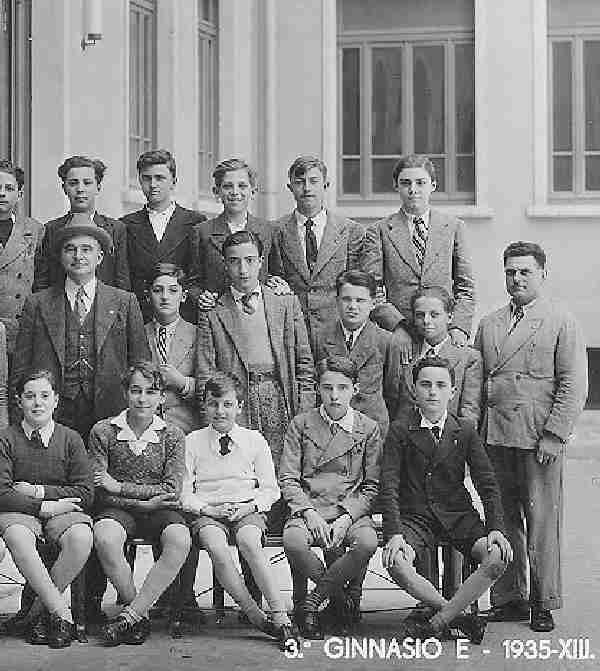 Figure 1.--This is one of the third year classes at the Ginasio Parini in Milan during 1935. The boys would be about 14 years old. This would be a state secondary school. |

|
The basic state school systenm is explained in the school system section. A basic understanding of the Italian school system is needed to unddrstand how clothing differed at the various schools. Italy did not emerge as a unified country until the 1860s. As a result we can only befin talking about an Itlalian school systen until the 1860s. Modern schools are similar to the educational system that has developed in other European countries. We have some information on the current system, but still little information on the Italian school system before the modern era. Until after World War II attendance at primary schools was common, but only students from affluent families or the most capable went on to secondary schools. Indeed the boys seen here in this 1935 all seem smartly dressed. Perhaps influenced by the era of Austrian control, we find secondary schools called Ginasios. We believe that these are state secondary schools.
The basic state school systenm is explained in the school system section. A basic understanding of the Italian school system is needed to unddrstand how clothing differed at the various schools. Italy did not emerge as a unified country until the 1860s. As a result we can only befin talking about an Itlalian school systen until the 1860s. Modern schools are similar to the educational system that has developed in other European countries. We have some information on the current system, but still little information on the Italian school system before the modern era.
Until after World War II attendance at primary schools was common. In other European countries boys attended primary school to about age 13-14 years. Boys going on the secondary scholl transferred at about age 12. We do not know if this general pattern was the same in Italy or what the current system is. We believe that Mussolini'd Fascis regime put a greater emphasis in educatuong children from poor families, but we have few details at this time.
Until after World War II only students from affluent families or the most capable went on to secondary schools. Indeed the boys seen here in this 1935 all seem smartly dressed (figure 1). Perhaps influenced by the era of Austrian control, we find secondary schools called Ginasios. We believe that these are state secondary schools. We also note schools called liceos. We are not sure what the difference was betweem ginasios and liceos. Notably schoolss in France were also called liceops, but the meaning has varied over time. We are not sure what Italian secindary schools are currently called.
The boys here in this 1935 photograph from a ginasio are all smartly dresses. There was no school uniform. As far as we know there were no regulations about what the boys had to wear. Many of the boys wear suits. We notice both single and dounle-breased suits, but no Norfolk jackets--a style that had early been very popular. There are also quite a number of boys wearing open-collar shirts with or without sweaters. The only similarity we note in the varuious school portraits of 1st-3rd year boys is that they all wear short pants. The only exceptuoins we note are a few boys wearing knickers or sailor suits with long pants. Except for the boys wearing sailor suits, we do not note any boys wearing long pants. Of course we do not know wha Most of the boys in the back rows are wearing. Most of the boys wear ankle socks and a few boys wear kneesocks. A reader writes, "I cannot tell for sure, but are one or two of the boys wearing shorts and ankle socks also wearing long stockings?" It does look like the boy second from right on the front row is wearing long stockings, but the portrait is not clear enough to know for sure. HBC is especially confused because he also looks to be wearing ankle socks. We have little inforation about long stockings in Italy. We do know that long stockings were still common in countries to the north such as (Austria, Germany, Poland, and Scandinavia). Younger boys in these countries did wear long stockings with short pants, but it was not very common for teenagers even younger teenagers to do this. The boy in question appears to be wearing a suit jacket made for a larger person--perhaps his father's old suit.
Related Chronolgy Pages in the Boys' Historical Web Site
[Main Chronology Page]
[The 1900s]
[The 1910s]
[The 1920s]
[The 1930s]
[The 1940s]
[The 1950s]
[The 1960s]
[The 1970s]
Navigate the Relate Boys Historical Clothing Style Pages
[Main country page]
[Long pants suits]
[Short pants suits]
[Lederhosen]
[Kneesocks]
[Eton suits]
[Jacket and trousers]
[Blazer
[School sandals]
Navigate the Boys' Historical Clothing Web Page
[Introduction]
[Activities]
[Biographies]
[Chronology]
[Cloth and textiles]
[Clothing styles]
[Countries]
[Topics]
[Bibliographies]
[Contributions]
[FAQs]
[Glossaries]
[Satellite sites]
[Tools]
[Boys' Clothing Home]
